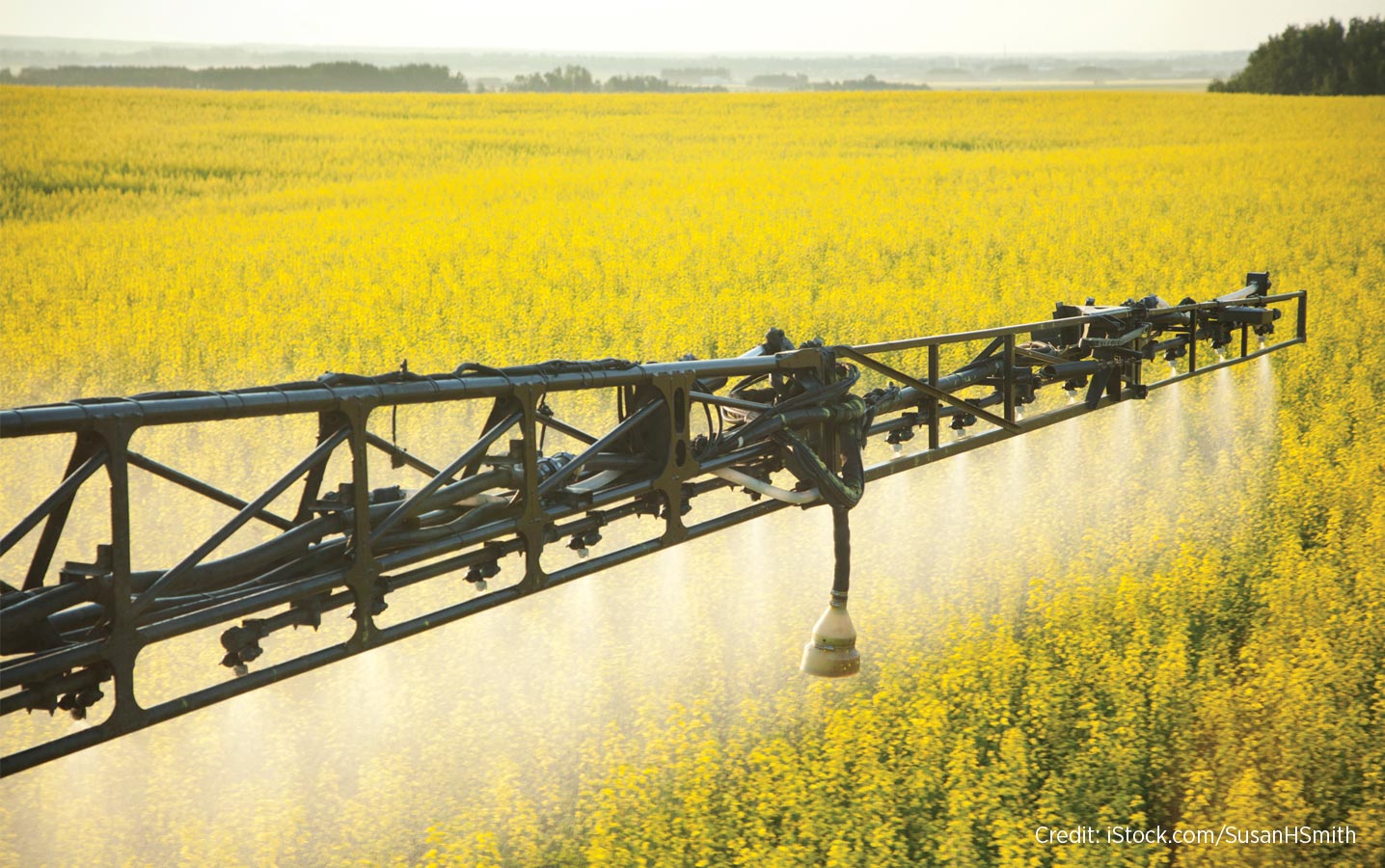Keep it Clean
The “Keep it Clean” program emphasizes important on-farm decisions to produce export quality products that meet market requirements. It outlines particular risk areas and potential trade barriers that can stem from these decisions.
“Unacceptable pesticide residues and blackleg management remain a focus for 2017,” says Brian Innes, Canola Council of Canada (CCC) vice president of government relations. The CCC, as part of its market access efforts, pays close attention to products and pests that may become issues and informs growers of best practices to mitigate potential risks through Keep it Clean.
Acceptable pesticides
“The first tip in our Keep it Clean program is to use acceptable pesticides only,” says Innes. This means only applying pesticides that are registered for use on canola in Canada and won’t cause trade concerns.
“A product may be registered in Canada, but if an important buyer has a potential concern this can create a market risk,” says Innes. “It’s important to talk to your grain buyer to ensure that the pesticides you’re using are acceptable.”
Pesticides on the canola “do not use” list are Accord, Clever and Masterline Quinclorac (active ingredient quinclorac), Venture L and Fusion (active ingredient fluazifop-p-butyl) and Ronilan (active ingredient vinclozolin). Also, growers will want to consult their grain buyer before using Quash (active ingredient metconazole).
Using pesticides correctly is also critical. This includes following labels for rates and timing, especially pre-harvest intervals. Growers can check out provincial Guides to Crop Protection and visit spraytoswath.ca for more info.
Meeting export standards on delivered grain is a concern for all crops exported from Western Canada. Canola growers may have noticed that Cereals Canada, Pulse Canada and the Canola Council are working together to bring information to growers in a simple and coordinated way. For details, see www.keepingitclean.ca.
Export customers are becoming increasingly sensitive to unacceptable residues. Recent news that EU importers are no longer buying flax from the Black Sea region because of unacceptable residues is a reminder of the consequences of not meeting customer requirements. In this case, the pesticide is not used on flax in Canada. The Canola Council monitors pesticide use and customer requirements to ensure that our canola exports continue to meet the requirements of our major markets.
Blackleg
Vigilance with regard to blackleg management sends a valuable and respectful message to China, a top-two market for Canadian canola.
China is concerned that blackleg residue on Canadian canola imports could bring the blackleg pathogen Leptosphaeria maculans into their canola growing regions, and had announced plans in 2016 to impose a severe dockage limit on canola seed imports. The agreement signed in September guarantees that we can continue to export canola to China under the same terms that were in place before this dispute began. But that agreement expires in 2020.
In the meantime, the CCC is continuing to work toward a long-term solution of stable trade and science-based policies supported by research to deepen understanding of blackleg in both countries.
For the growing season ahead, canola growers can help by following these Keep it Clean steps to help control blackleg:
- Plant only canola varieties rated R (resistant) or MR (moderately resistant). Rotate varieties to bring a mix of blackleg resistance genes to the field over time.
- Plant certified treated seed.
- Scout canola fields regularly for blackleg symptoms and prevalence to help determine the effectiveness of your blackleg management plan.
- Maintain a break between canola crops to allow time for crop residue to decompose. If blackleg becomes established, a minimum break of two to three years is recommended.
- Consider applying a fungicide if you identify the disease early in the season.
- Control volunteer canola and other Brassica weeds (stinkweed, shepherd’s purse, wild mustard, flixweed) to prevent blackleg build up during non-canola years.
For more on Keep It Clean, please visit the website at keepingitclean.ca





